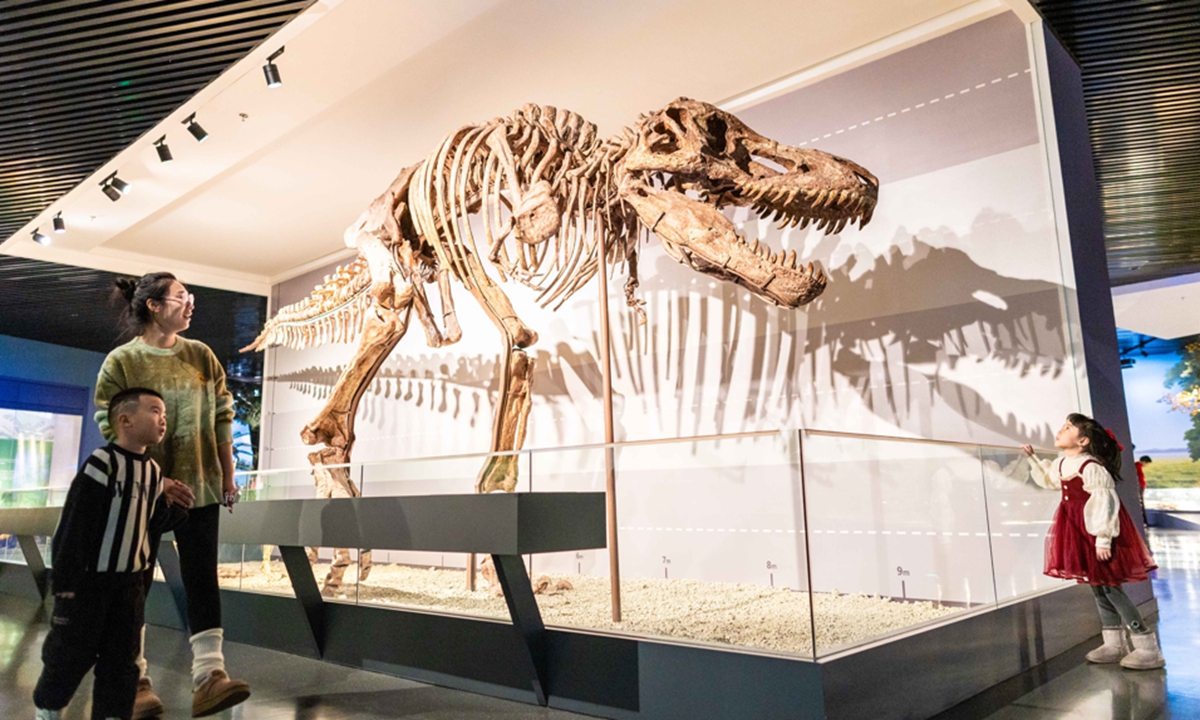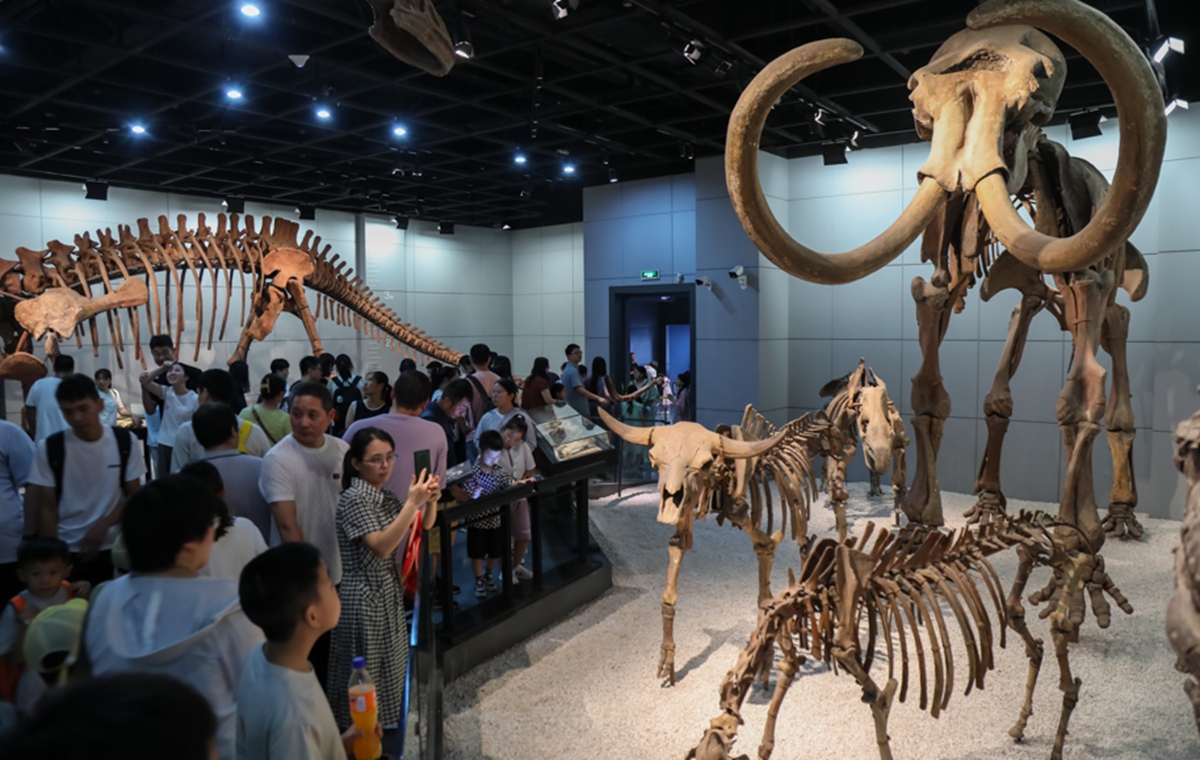
Visitors observe a dinosaur fossil in a museum in Hohhot, North China's Inner Mongolia Autonomous Region. Photo: VCG
China has become the country with the most dinosaur fossil discovery sites in the world, the Institute of Vertebrate Paleontology and Paleoanthropology (IVPP) at the Chinese Academy of Sciences recently revealed.
After speaking with experts in this field, the Global Times learned that the achievements are the result of many discoveries by ordinary people, dedicated research by experts, government policy support, and advances in modern technology.
According to Xing Lida, a paleontologist and associate professor at the China University of Geosciences Beijing, while dinosaur fossils are primarily discovered through human efforts and accidental finds such as road construction, modern technology such as CT scans, 3D scanning, and virtual reality (VR) is providing new insights into analyzing fossils, revealing internal structures, and reconstructing dinosaurs' behavior and evolutionary history.
"These advancements have propelled paleontology beyond traditional morphological descriptions into an era of multidisciplinary, quantitative analysis," Xing told the Global Times.

Visitors explore the Earth's Life Story exhibition in a museum in Hangzhou, East China's Zhejiang Province. Photo: VCG
Collective efforts China boasts a rich and diverse collection of paleontological fossils, with numerous significant discoveries, many of which were initially found by ordinary villagers going about their daily lives. They often serve as the first key to unlocking the secrets of ancient life.
In November 2024, for example, a Late Cretaceous ankylosaur fossil specimen (about 84 to 72 million years ago) found in Guangchang county in Fuzhou, East China's Jiangxi Province, was identified as a new species of dinosaur. This specimen, identified as China's largest ankylosaur, was named Huaxiazhoulong shouwen by vertebrate paleontology expert Zhu Ziheng.
"The contributions of the general public cannot be overlooked in the discovery of many significant paleontological fossils in China," Zhu told the Global Times.
Zhu disclosed that on April 5, 1986, a villager in Jiangxi Province accidentally discovered fragments of the ankylosaur fossil while plowing. After referencing popular science books, they realized it might be a dinosaur fossil and reported the finding to the local cultural station.
Soon after, the cultural heritage teams in Jiangxi, along with other organizations, carried out a rescue excavation.
"Once fossil clues are discovered, the local government ensures that protection efforts are effectively implemented, to allow small fossil fragments to be pieced together into significant dinosaur discovery," Zhu said.
According to Zhu, the fossil was severely fragmented due to weathering at the time of excavation, with some rib bones broken in seven or eight sections. To salvage these valuable fossils, they were sent to the Shanghai Natural History Museum for professional restoration. After completion, they were transferred to the warehouse of the Jiangxi Provincial Museum for preservation. With the advancement of technology, Zhu has reexamined the fossils in present day.
In China, fossil research is also supported by robust policy backing. Zhu's study was funded by the National Natural Science Foundation of China (NSFC), one of the country's primary channels for supporting fundamental research. The NSFC is dedicated to funding researchers from well-equipped universities and scientific institutions with strong research capabilities.

Paleoecological restoration of a paleofish species newly discovered in Yunnan Province Photo: Courtesy of IVPP
Unprecedented precision, depth"Modern technology has brought unprecedented precision and depth to the study of dinosaur fossils," Xing noted.
CT and MCT scanning techniques use X-ray tomography to capture high-resolution 3D structures inside dinosaur fossils, revealing microscopic bone features, growth patterns, and even traces of soft tissue.
"For example, scans of fossilized dinosaur eggs allow scientists to observe embryonic development and infer reproductive behaviors," he said.
Finite Element Analysis, however, is a computer-based mechanical simulation method that evaluates stress distribution and deformation in dinosaur bones under different forces. By simulating the bite force of a Tyrannosaurus Rex skull, scientists found that its bite force could reach several tons, providing strong evidence of its role as a top predator.
Additionally, VR technology allows researchers to "dissect" dinosaur fossils in a virtual environment, examine internal structures, and even simulate their habitats, offering new perspectives on their behavior and evolutionary history.
Zhu also utilizes similar cutting-edge technologies in his research.
According to Zhu, laser scanning technology is now being applied in China's fossil archaeology. Since dinosaur fossils are massive and highly susceptible to secondary damage during transportation, they use handheld laser scanners to capture 3D data.
"This technology not only eliminates the risk of damage during transport, but also allows us to disregard color variations on the fossil's surface, presenting details with greater clarity," Zhu said.






